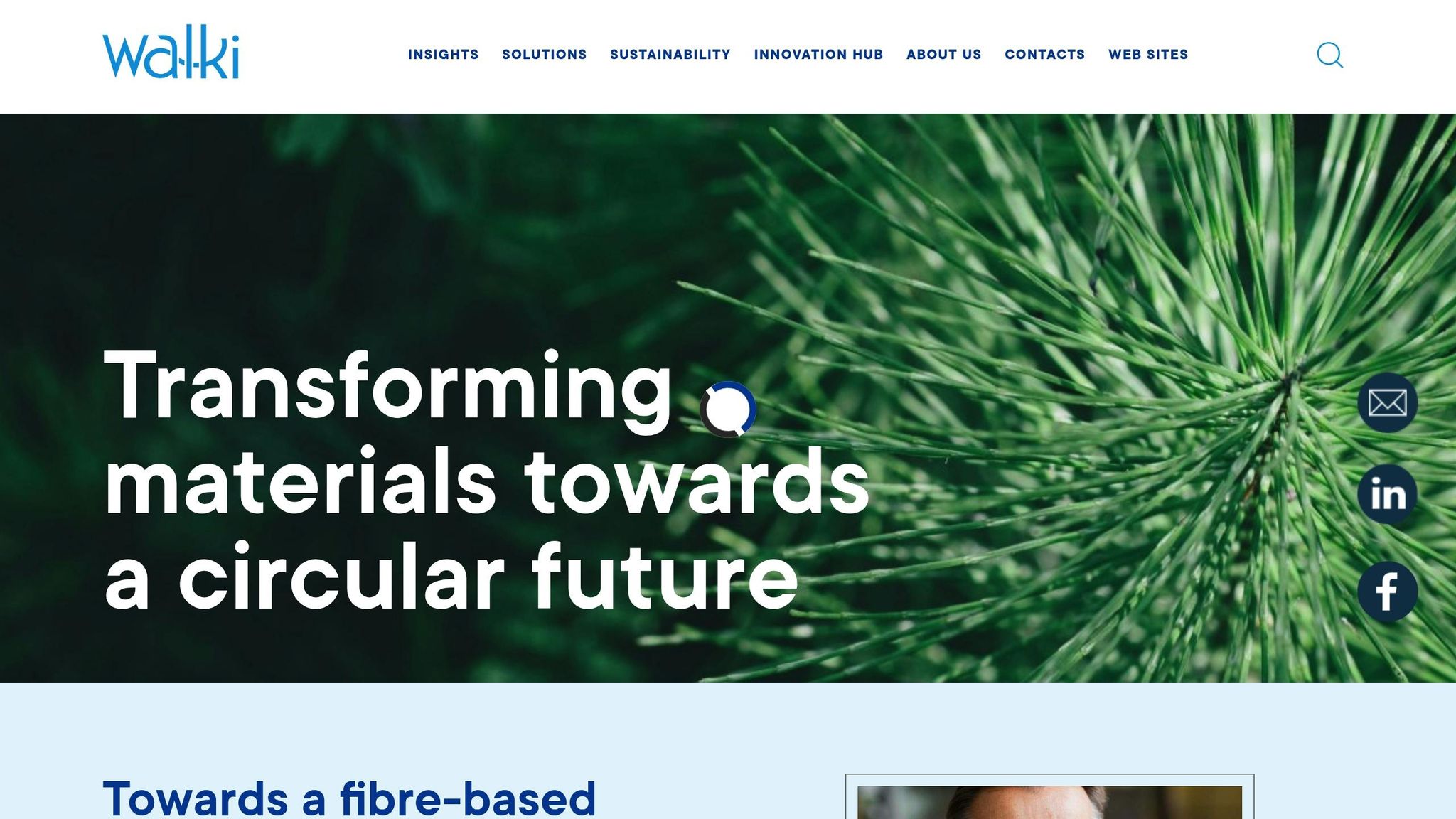Want to produce bags responsibly while keeping quality high? Here’s how:
- Use Eco-Friendly Materials: Opt for recycled polyester, organic cotton, hemp, or emerging options like cork fabric and bamboo fiber.
- Efficient Shipping: Source materials locally, optimize routes, and consolidate shipments to reduce emissions.
- Design for Longevity: Build durable bags, make them easy to repair, and start return programs for recycling.
- Partner with Green Suppliers: Work with suppliers certified in eco-conscious practices (e.g., ISO 14001, GOTS, bluesign®).
- Minimize Waste: Use lean manufacturing, conserve water and energy, and manage chemicals responsibly.
Summary Table:
| Focus Area | Key Actions |
|---|---|
| Materials | Recycled polyester, organic cotton, hemp |
| Shipping | Local sourcing, route optimization |
| Product Design | Durable, repairable, recyclability |
| Supplier Standards | Eco-certifications, audits, collaboration |
| Waste Reduction | Lean methods, energy and water savings |
These steps help reduce environmental impact while maintaining profitability. Start small, track progress, and improve over time.
Sustainable Bag Manufacturing Process at Walki

Choose Green Materials
Selecting eco-friendly materials is an important step toward creating a more sustainable supply chain. The right materials not only help minimize environmental impact but also meet the quality and durability standards required for custom sports bags. These choices lay the groundwork for adopting more sustainable practices in production and logistics.
Recycled Fabrics
Recycled polyester (rPET) transforms plastic bottles into durable, high-performance fabric. At JUNYUAN BAGS, rPET is used to show that recycled materials can match the quality of traditional fabrics.
- Reduces landfill waste
- Lowers carbon emissions during production
- Decreases dependence on new raw materials
- Maintains comparable durability to non-recycled options
Natural Fibers
Natural fibers bring both environmental benefits and unique aesthetic and functional qualities. Two popular options include:
- Organic Cotton: Grown without harmful pesticides, offering a safer and more eco-conscious choice.
- Hemp: Known for its durability and natural antimicrobial properties, making it a practical option for long-lasting products.
Emerging Green Materials
Advancements in sustainable materials are constantly expanding the possibilities for eco-friendly manufacturing. Here are a few innovative options:
| Material Type | Environmental Benefits | Best Applications |
|---|---|---|
| Bio-based Nylon | Produces fewer carbon emissions | Ideal for high-performance sports bags |
| Cork Fabric | Renewable and biodegradable | Perfect for accent details and handles |
| Bamboo Fiber | Grows quickly and sustainably | Great for interior linings and soft accessories |
When choosing green materials, it’s essential to evaluate factors like durability, water resistance (using eco-friendly treatments), cost, and verified sustainability certifications. Incorporating these materials not only extends the product’s lifespan but also helps reduce its overall environmental impact.
Improve Shipping Methods
Finding better ways to handle shipping and transportation is key to cutting down the environmental impact of bag production. Efficient logistics not only lower emissions but also maintain productivity. At JUNYUAN BAGS, we prioritize eco-friendly shipping as part of our broader efforts to produce responsibly. These steps complement the use of sustainable materials, further reducing the overall footprint.
Source Materials Locally
Choosing local suppliers brings both environmental and economic benefits. Here’s why it matters:
- Shorter Distances: Less fuel is used, and fewer emissions are released when shipping distances are reduced.
- Improved Oversight: Staying closer to suppliers makes it easier to monitor their practices.
- Quicker Adjustments: Local sourcing allows for faster tweaks in production when needed.
- Smaller Storage Needs: Regular, smaller deliveries can help cut down on warehouse energy use.
For materials that must come from further away, consolidating orders is a smart move. It ensures containers are fully utilized, reducing the number of shipments.
Plan Better Routes
Using technology to streamline delivery routes can boost efficiency. Here are some strategies to consider:
| Strategy | Benefits | Tips for Implementation |
|---|---|---|
| Load Optimization | Fewer trips, lower costs | Stack goods efficiently to maximize space |
| Route Analytics | Cuts fuel use and emissions | Leverage GPS and real-time traffic updates |
| Delivery Scheduling | Reduces delays and idle time | Group pickups and deliveries by location |
Other key considerations include:
- Traffic Patterns: Plan deliveries during less congested times.
- Weather Conditions: Adjust for seasonal or unexpected weather changes.
- Vehicle Capacity: Use vehicles that match the load size for maximum efficiency.
- Delivery Windows: Organize shipments by proximity and timing.
Incorporate tools like real-time tracking, dynamic routing, and flexible scheduling. For long-distance shipping, consider alternatives like rail to further reduce environmental impact.
sbb-itb-1e6451b
Design for Full Product Life
Designing for the entire lifespan of a product helps extend usability and minimizes waste. These choices naturally align with sourcing better materials and streamlining logistics.
Build to Last
Durability begins with smart design decisions that make products last longer. Important factors to consider include:
- Reinforcing stress points on handles, straps, and bag bottoms
- Using double-stitched seams
- Adding heavy-duty zippers and hardware
- Incorporating moisture-resistant base materials
At JUNYUAN BAGS, we hold ourselves to strict quality standards in manufacturing sports bags. Every design undergoes thorough durability testing. Plus, our customization options let customers request specific reinforcements tailored to activities like golf, tennis, or other sports.
Make Repairs Easy
Designing bags to be repairable ensures they stay in use longer. Here’s how:
| Feature | Purpose | Benefit |
|---|---|---|
| Modular Components | Simplifies part replacement | Cuts down on full bag disposal |
| Accessible Stitching | Eases seam repairs | Extends product lifespan |
| Standardized Hardware | Speeds up fastener swaps | Reduces material waste |
| Removable Panels | Allows section upgrades | Avoids replacing the whole bag |
By focusing on designs that allow quick and easy fixes without special tools, users can maintain their bags for years, reducing the need for replacements.
Start Return Programs
Take-back programs are a great way to create a circular system for sports bags. Effective programs should include:
- Clear instructions for returning used bags
- Convenient drop-off or shipping options
- Systems to sort materials for reuse
- Incentives to encourage participation
Making returns simple ensures more materials are recycled and reused.
Balancing durability with repair-friendly features and return programs allows manufacturers to lower waste while maintaining high-quality products. This approach benefits the environment and keeps customers happy with long-lasting, reliable bags.
Work with Green Suppliers
Teaming up with suppliers who prioritize eco-friendly practices is a smart way to lower your environmental footprint while maintaining high product standards.
Check Supplier Standards
When choosing suppliers, prioritize those with proven eco-certifications:
| Certification | Focus Area | Why It’s Important |
|---|---|---|
| ISO 14001 | Environmental management systems | Promotes structured, eco-conscious practices |
| GOTS | Organic textile certification | Confirms responsible fiber sourcing |
| bluesign® | Chemical management | Regulates harmful substance usage |
| SA8000 | Social accountability | Ensures ethical labor practices |
At JUNYUAN BAGS, we require certifications like BSCI, CE, and RoHS to meet both environmental and quality benchmarks.
Key areas to assess include:
- Water usage and treatment processes
- Energy efficiency and use of renewables
- Waste management and recycling programs
- Chemical handling and safety measures
- Integration of sustainability within the supply chain
Maintain Strong Partnerships
After selecting suppliers that meet high standards, the next step is building and maintaining strong, collaborative relationships.
Audits and Reviews
- Conduct quarterly performance evaluations
- Monitor environmental performance metrics
- Ensure compliance through regular documentation reviews
Collaborative Innovation
- Work together on sustainable material development
- Partner on research and testing projects
- Develop eco-friendly packaging solutions
- Launch waste reduction programs
Knowledge Exchange
- Offer training sessions
- Share best practices
- Provide updates on new regulations
- Exchange insights on market trends
Implement a scorecard to track progress on key metrics:
| Metric | Goal | Review Frequency |
|---|---|---|
| Carbon Emissions | Reduce by 15% annually | Monthly |
| Water Usage | Cut by 20% per unit | Quarterly |
| Waste Reduction | Achieve 90% recycling rate | Monthly |
| Energy Efficiency | Improve by 25% | Quarterly |
Strong partnerships rely on trust and shared goals. Regular communication and collaborative problem-solving can lead to continued environmental progress across the supply chain.
Cut Production Waste
Reducing waste not only lowers costs but also improves overall efficiency. Here’s how you can minimize waste effectively:
Use Lean Methods
Lean manufacturing focuses on eliminating waste at every stage. Here are some practical ways to implement it:
Material Optimization
- Use digital cutting patterns to get the most out of your fabric.
- Implement nesting software to arrange materials efficiently.
- Analyze material usage data to pinpoint waste and address it.
Inventory Management
- Adopt Just-In-Time (JIT) ordering to avoid overstocking.
- Set minimum and maximum stock levels based on actual production needs.
At JUNYUAN BAGS, optimizing digital patterns has cut fabric waste by 18% without affecting the quality of our sports bag lines.
Save Water and Power
Conserving resources is a mix of technology upgrades and procedural improvements:
Energy Efficiency Measures
- Install LED lighting in production areas.
- Use motion sensors to automate lighting control.
- Keep equipment running efficiently with regular maintenance.
- Schedule production during off-peak energy hours when possible.
Water Conservation
- Install systems to recycle water used in dyeing processes.
- Use low-flow fixtures in washing stations.
- Monitor water usage with smart meters to track consumption.
- Fix leaks promptly with regular maintenance checks.
| Resource | Conservation Method | Savings |
|---|---|---|
| Electricity | LED Lighting | 65% reduction |
| Water | Recycling Systems | 40% reduction |
| Compressed Air | Leak Detection | 25% reduction |
| HVAC | Smart Controls | 30% reduction |
Manage Toxic Materials
Handling hazardous materials responsibly protects both the environment and worker safety:
Chemical Management
- Store and handle chemicals in well-ventilated, designated areas to prevent spills.
- Train employees on correct handling procedures.
- Keep detailed logs of chemical inventory and usage.
Disposal Protocols
- Work with certified waste management companies for proper disposal.
- Separate hazardous waste from non-hazardous materials.
- Use clear labeling systems to avoid confusion.
- Document all disposal processes and keep records for compliance.
Alternative Solutions
- Replace toxic adhesives with water-based alternatives.
- Opt for eco-friendly cleaning products.
- Use materials with low VOCs (Volatile Organic Compounds).
- Invest in closed-loop dyeing systems to reduce waste.
These measures are part of a larger strategy to improve sustainability throughout all stages of production. By focusing on waste reduction, you can make your operations more efficient and environmentally responsible.
Conclusion
Producing bags sustainably means balancing eco-friendly practices with efficient operations. Key steps – like choosing better materials and cutting waste – work together to support long-term goals.
Success in bag manufacturing hinges on consistent efforts in these areas:
- Material Choices: Using eco-conscious materials.
- Logistics: Streamlining supply chains to reduce emissions.
- Durability: Creating products that last longer.
- Supplier Collaboration: Partnering with responsible suppliers.
- Waste Reduction: Minimizing production waste.
At JUNYUAN BAGS, these strategies have led to noticeable improvements in conserving water, using energy more efficiently, and reducing fabric waste.
While initial investments in sustainable practices may seem costly, they often lead to lower operating costs, a stronger brand image, and a positive impact on the environment over time. By focusing on these areas, manufacturers can create responsible supply chains without compromising on quality or profitability.
Sustainability isn’t a one-time goal – it’s an ongoing process. Regularly reviewing and refining these practices is key to staying ahead and making continuous progress.




 Mobile/What's App/Wechat
Mobile/What's App/Wechat E-Mail
E-Mail ADD
ADD




